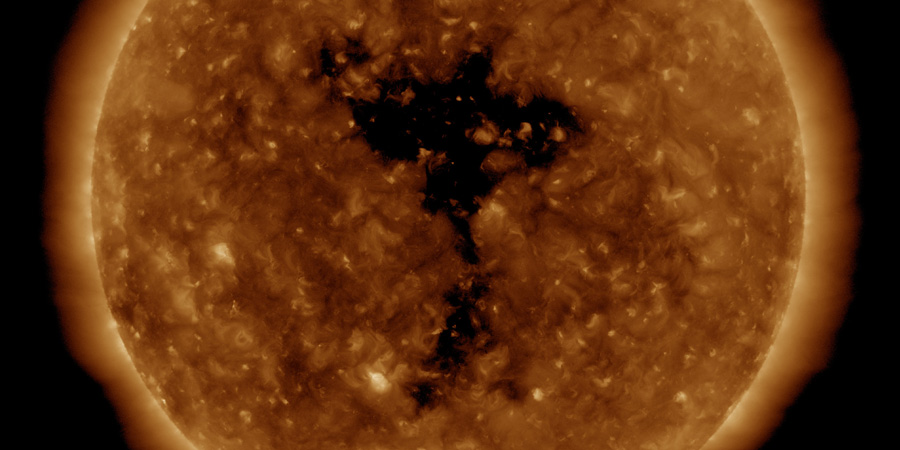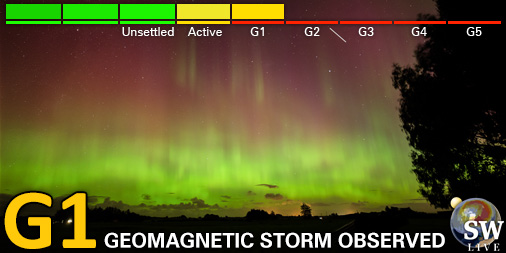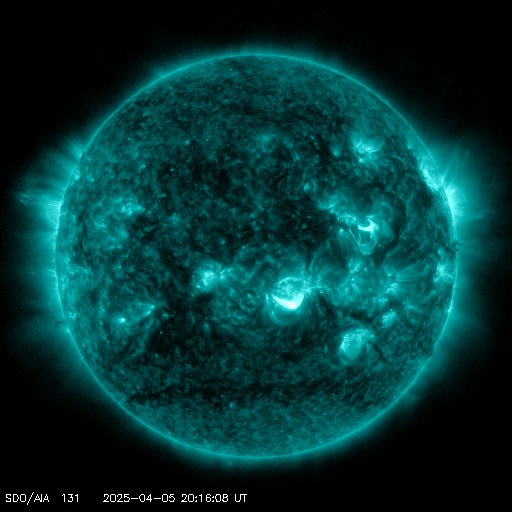Coronal hole faces Earth, G1 watch
Tuesday, 22 October 2019 14:34 UTC

A large coronal hole is facing our planet today. Most of you might remember this coronal hole as it is the same coronal hole that faced our planet on 28 August and 24 September. This coronal hole has always been a reliable source for geomagnetic storm activity a few days later. What can we expect this time around?
Let's find out! The size of this coronal hole seems to be fairly similar to the size that it had during the previous rotation. Based on that fact, the geomagnetic storms caused by this coronal hole back in August and September and the data from STEREO Ahead we can conclude that minor G1 geomagnetic storm conditions are likely after the high speed solar wind stream arrives. The Co-rotating Interaction Region (CIR) ahead of the high speed solar wind stream is likely to arrive at Earth on Thursday, 24 October. The NOAA SWPC thinks this as well and has already issued a minor G1 geomagnetic storm watch for Thursday, 24 October. The effects of the high speed solar wind stream should last well into Friday and perhaps Saturday as well. Charge your camera batteries! If you are at a high enough latitude it looks like you are in for some nice auroral activity!
A northern hemisphere coronal hole is facing Earth. Enhanced solar wind could arrive in ~3 days - Follow live on https://t.co/bsXLidnzGh pic.twitter.com/JNzeYlbciw
— SpaceWeatherLive (@_SpaceWeather_) October 21, 2019
Live northern lights YouTube stream
Last Saturday I decided to try something new. I put a camera on my balcony and filmed the northern lights and streamed it to our YouTube channel in real time. While the website and our webmaster originate from Belgium, yours truly resides in Swedish Lapland and from my balcony I can occasionally see some nice northern lights. I tested my live streaming equipment on Saturday and when there was some aurora to be seen I decided to go online. It wasn't the best aurora display ever observed but all of your positive reactions were very nice to see! I plan to do this more often whenever time allows, the weather cooperates and of course when there is some aurora activity. Be sure to subscribe to our YouTube channel (bet you never heard that before) if you'd like to be notified whenever we upload a video or start a live stream. Below you can watch our first live stream that we aired on Saturday evening. Thanks!
Thank you for reading this article! Did you have any trouble with the technical terms used in this article? Our help section is the place to be where you can find in-depth articles, a FAQ and a list with common abbreviations. Still puzzled? Just post on our forum where we will help you the best we can!
Current data suggests there is a slight possibility for aurora to appear at the following high latitude regions in the near future
Fairbanks, AKLatest news
Latest forum messages
Support SpaceWeatherLive.com!
A lot of people come to SpaceWeatherLive to follow the Sun's activity or if there is aurora to be seen, but with more traffic comes higher server costs. Consider a donation if you enjoy SpaceWeatherLive so we can keep the website online!

Latest alerts
02:00 UTC - Geomagnetic activity
Minor G1 geomagnetic storm (Kp5) Threshold Reached: 01:50 UTC
Saturday, 5 April 2025
20:30 UTC - Geomagnetic activity
Minor G1 geomagnetic storm (Kp5) Threshold Reached: 20:20 UTC
20:24 UTC - Solar flare
Moderate M1.05 flare
20:09 UTC - Radio Blackout
Minor R1 radio blackout in progress (≥M1 - current: M1.05)
10:00 UTC - Hemispheric Power Index
The OVATION model predicts the Hemispheric Power Index to reach 78GW at 10:32 UTC
Space weather facts
| Last X-flare | 2025/03/28 | X1.1 |
| Last M-flare | 2025/04/05 | M1.0 |
| Last geomagnetic storm | 2025/04/05 | Kp6- (G2) |
| Spotless days | |
|---|---|
| Last spotless day | 2022/06/08 |
| Monthly mean Sunspot Number | |
|---|---|
| March 2025 | 134.2 -20.4 |
| April 2025 | 150.4 +16.2 |
| Last 30 days | 131.6 -13.4 |





